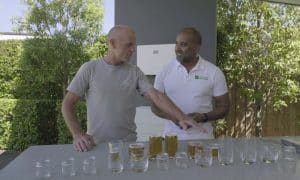In an engineering first, Monash University researchers have designed a graphene-based supercapacitor (SC); an energy storage system more compact than a conventional battery system and with a longer service life.
Graphene has set the world of solar research abuzz in recent months with hopes of creating ultra-thin solar cells from the material that could be used as a coating for buildings. Graphene is now also being used to build a new generation of long-life batteries for renewable energy systems.
Endowed with an indefinite lifespan and ultra-fast recharge time, supercapacitors are well suited to energy systems used in high drain/charge environments, such as personal electronic devices, wind and solar plants and electric vehicles. The challenge has been to make SCs smaller, more portable, and to increase energy-storage-to-volume ratios – also known as energy density.
“It has long been a challenge to make SCs smaller, lighter and compact to meet the increasingly demanding needs of many commercial uses,” said team leader Professor Dan Li from Monash’s Department of Materials Engineering.
Supercapacitors are usually manufactured using porous carbon containing an electrolyte liquid to transport the electric charge. But as Li explains, the ‘hard’ carbon pores are too large, wasting space and adversely affecting energy density levels.
Li’s team substituted this traditional carbon structure with highly conductive and tensile graphene sheets, thereby maximising space and vastly increasing energy density. An electrolyte liquid was then used to separate the sheets while conducting electricity within the SC.
The Monash graphene-based supercapacitor has demonstrated an energy density of 60 watt/hours per litre – around 12 times higher than commercially available SCs.
“We have created a macroscopic graphene material that is a step beyond what has been achieved previously. It is almost at the stage of moving from the lab to commercial development,” Professor Li said.
Source









































